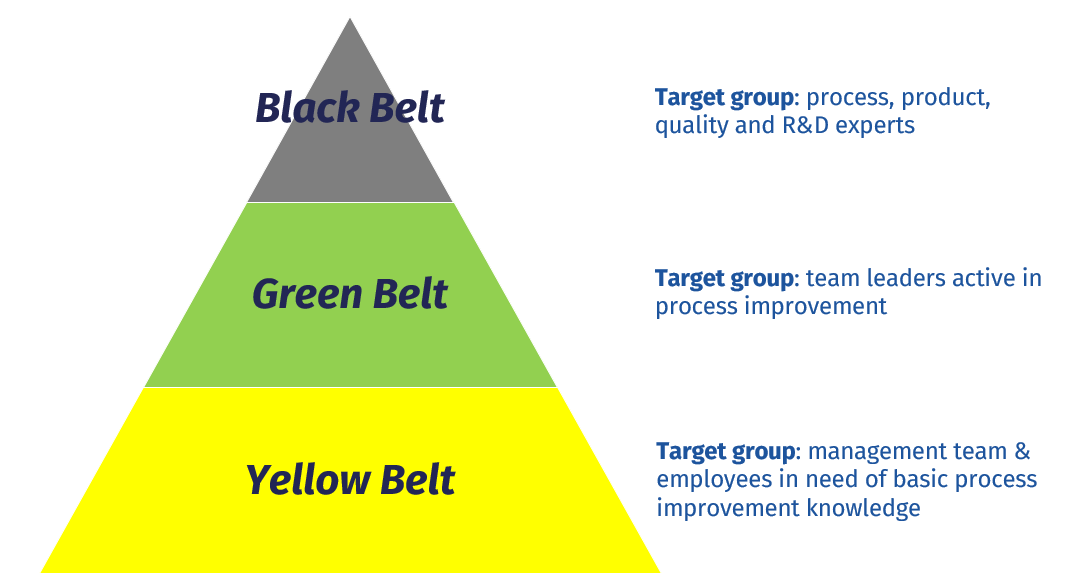During the Stanwick Yellow Belt, participants are immersed in the wonderful world of process improvement. They learn to use the DMAIC project structure (Define - Measure - Analyse - Improve - Control) and are trained in the meaning and basic tools of each of these DMAIC phases. At the very least, participants can use the basic tools of the process improvement toolbox, and can thereby function perfectly as a member of an improvement team led by a Green or Black Belt.
With some guidance, the more entrepreneurial Yellow Belts can even successfully start small improvement initiatives on their own. The Yellow Belt has been trained so that he/she can support multiple target groups: the first target group consists of people who the organisation wants to understand and speak the process improvement language, but for whom it’s sufficient to have the basic knowledge. These are often people who participate in process improvement work and/or projects, but not as project managers. You also often see people from the management team taking part. A second target group can be identified as those who have doubts: these are often employees who wonder whether this would be something for them. They see a Yellow Belt as the stepping stone to more.
The Stanwick Green Belt is the ideal entry level for team leaders who are active in process improvement. With our formula, participants are thoroughly trained in the components that are essential in order to lead and bring a DMAIC project to a successful conclusion. They gain an insight into the background and philosophy of process improvement techniques. They are trained to understand and apply the different tools from both the LEAN and the SIX SIGMA toolbox. In addition, they also learn about tools that can be used to smoothly guide the improvement initiative through the organisation.
The Stanwick Black Belt that we offer completes the participants' knowledge of statistics. The deeper techniques, such as Gage R&R, deeper hypothesis testing, regression analysis and, of course, Design Of Experiments (DOE), are discussed. This training course mainly focuses on process, product, quality and R&D experts. We also have an adapted program for Lean.

Read more about Lean
Read more about Six sigma
At Stanwick, we understand the value of Green Belt Lean Six Sigma training and offer high-quality professional courses designed to propel your organisation and your personal growth to new heights. Contact us today and find out how our training courses can help you achieve your goals.





